-
About
- About Listly
- Community & Support
- Howto
- Chrome Extension
- Bookmarklet
- WordPress Plugin
- Listly Premium
- Privacy
- Terms
- DMCA Copyright
- © 2010-2024 Boomy Labs


 Jodie Taylor
Jodie Taylor
Listly by Jodie Taylor

Emotion is a phenomenon that, according to [Sergei] Eisenstein, "is completely identical with the primary phenomenon of cinema. [In cinema] movement is created out of two motionless cells. Here, a movement of the soul, i.e. emotion (from the Latin root motio = movement), is created out of the performance of a series of incidents." ([Towards a Theory of Montage] 145, emphasis in original). Properly structured as a series of uncompleted incidents, montage calls on us to finish the actions mentally, and for Eisenstein this internal movement of filling in the gaps is emotion, a movement of the soul. [Greg M. Smith, Moving Explosions: Metaphors of Emotion in Sergei Eisenstein's Writings', Quarterly Review of Film and Video 21.4 (October-November 2004) 303-315 citing Eisenstein, Towards a Theory of Montage. Trans. Michael Glenny. Ed. Michael Glenny and Richard Taylor. London: BFI Publishing, 1991; hyperlinks added]
[H]ow to write about specific, personal affective experiences of the cinema? [...]
It is difficult for me to articulate, but I was affected [in Unforgiven] by the conjunction of lighting, costuming, and the melancholy, homicidal figure of [Clint] Eastwood in the final shootout in Greely’s. The mise en scène of this confrontation repeats that of the night of Will’s beating at the hands of Sheriff Little Bill Daggett (Gene Hackman). The lack of contrast in lighting and the orange and brown colours of both the characters’ costumes and saloon setting cause the characters to merge into their surroundings. It is literally difficult to see what is happening. While William Munny and the Eastwood persona are constructed as unforgiven in this scene, somewhere in the gloom I found a metaphor for the ambivalence of their forgiveness across the entire film. As a result, I declined to judge this “notoriously vicious and intemperate” figure, as he is labelled in [the film]. Instead I forgave him. I saw his thinning hair and the wounds engraved on his face, and reached out to tend to them. Forgiveness was the punctum which I found in Unforgiven and which is already there in the text, if ambiguously. [...]

AFFECT/AFFECTION. Neither word denotes a personal feeling (sentiment in Deleuze and Guattai). L’affect (Spinoza’s affectus) is an ability to affect and be affected. It is a prepersonal intensity corresponding to the passage from one experiential state of the body to another and implying an augmentation or diminution in that body’s capacity to act. L’affection (Spinoza’s affection) is each such state considered as an encounter between the affected body and a second, affecting, body … (Massumi, Plateaus xvi)

Whatever this is, it seems to involve “affect”, in all it’s dimensions. But what’s affect? Affect is both the simplest thing and the most complex. I guess that’s what makes it both so valuable and so difficult to think about. There’s a great Affect Theory Reader out now, edited by Greg Seigworth and Melissa Gregg. It’s great for lots of reasons apart from the fact I co-wrote a chapter for it (along with Lone Bertelsen … our chapter is “An Ethics of Everyday Infinities And Powers: Félix Guattari on Affect and the Refrain” … Lone’s also written some great things on affect and photoworks—). And it’s not as though there’s not a lot of wonderful material around on affect. There are of course the thinkers I mention below, and lots of other people. Two of my favourites writers on affect I have to quickly note here who are not mentioned below are Lauren Berlant and Sianne Ngai (one day I’ll put a largish affect reading list up—not today though). You could do worse than start with this wonderful Wang Wei poem, My Retreat at Mount Zhongman.

Fundamentally, affect is extremely related and crucial to the context of media and communication, as this is the field in which interaction and engagement are created through audience feelings and emotions. Whether it is a piece of music, novel, film, an advertisement or any of other media works; stimuli and "intensities" are all involved in the process of affecting and being affected by us.

Affect theory is an approach to culture, history, and politics that focuses on nonlinguistic forces, or affects. Affects make us what we are, but they are neither under our “conscious” control nor even necessarily within our awareness—and they can only sometimes be captured in language. Affect theory can be linked to other conversations happening in the humanities—including Michel Foucault’s “analytics of power,” new attention being paid to animals, the study of secularism, and my home field of religious studies. Affect theory helps us understand power by encouraging us to think of power as theater.

In-keeping with Mona’s recent ’10 things I know about...’ blogs, I have accepted the challenge of attempting to summarise my own research in such a way. Here are 10 thoughts about affect and film scribed without reference to notes or quotation: Film phenomenologists such as Vivian Sobchack consider ‘affect’ to…

How do works of art affect us? Conceptual art seems too cool for it to be connected with emoiton. Jesse Prinz argues that our experience of art is fundamentally emotional, and wonder is the key. Listen to Jesse Prinz on this Philosophy Bites podcast.
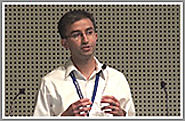
In 1995, Picard proposed ideas about how to use affective computing for multimedia selection. She envisaged a content player which can sense user's emotional state and deliver the content that matches her emotional state. This also needs an emotional understanding of the content itself.
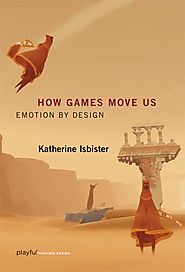
In How Games Move Us Katherine Isbister examines the ways in which video games can influence emotion and social connection. Below Playful Thinking series coeditor Jesper Juul interviews her about the new book.

A prizewinning new multisensory exhibition is using sounds, touch and scents to reinterpret some works of modern British art.
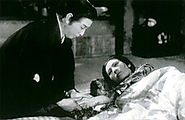
Just as “medicine’s conquest of the body” as an object of knowledge “required the gradual foreclosure of subjective experience”, as John Wiltshire writes (Wiltshire, 40-41), when we examine the transposition of the physiological understanding of the body and of vision into contemporary film theory, it is the same foreclosure of the full resonance of embodied experience that characterises this disciplinary field, and the physiological metaphor emerges as a regulatory force in its own right within film theory.

The experience of videogames is distinct from other forms of mediated storytelling because the person playing the game can come to feel responsible for events and characters within a fictional world due to dynamics within what Brendan Keogh calls the ‘messy, hybrid assemblage’ of videogame play:
Games function through modes of engagement where people need to make decisions and take actions in order to proceed through a hybrid text, in a context that the player is affectively invested in, and which is personally relevant to both the player and their situation. A perception of responsibility grows out of that agency, since the player’s decisions have a meaningful impact on a world and characters that they already invested in treating as if they were real.

I teach a class on urban film which charts a history of the relationship between the cinema, the city and affect and every year at the mid-point I screen Wong Kar-wai’s In the Mood for Love (2000).[I] The “New Wave” of Hong Kong Cinema and this film, charting a love affair that does not happen, always rate as one the most popular of topics we cover—perhaps surprisingly given the more populist content of the rest of the course (including the gangster film, horror, science fiction and Tarantino). The student body at the University of East London is hugely diverse but the dimly-lit, claustrophobic and repressed city of 1962 Hong Kong, with its lack of much of a guiding narrative, is a very distant alien world—albeit one that is punctuated by the impeccable suits and spectacular dresses of the two leads (Tony Leung and Maggie Cheung), an evocative soundtrack and images composed with breath-taking beauty. What the students don’t know is that every time we get to the final sequence of the film, as Chow (Tony Leung) whispers his secret into the grey stone walls of the Angkor Wat temples of Cambodia, the proverbial hairs rise on the back of my neck and a lump rises in the back of my throat—every year, without fail, like some neo-Pavlovian response. For me, these two different anecdotal affective responses contain within them some of the most difficult and pressing issues when discussing theories of affect: the relationship between affect and history and cultural context, affect in the globalised city, collective versus individualised responses, and the relationship between affect and emotion. In some ways these are well-trampled debates, and certainly too large and unresolvable for a piece like this. But In the Mood For Love feels like a still very contemporary response to them and not the nostalgic evocation of 1960s Hong Kong that we might be tempted to see it as.
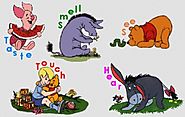
Artificial flavours, augmented senses, immersive media, augmented reality, virtual reality By shaping the media environment, media are able to tune the human sensorium according to their “bias”. Equipped with ideasthesia/synesthesia, the sensorium follows the environment. In its turn, thanks to neuroplasticity (and ideasthesia/synesthesia), the sensorium is able to adapt humans to any media environment. Media…
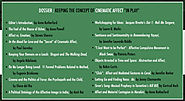
Following a groundswell of paradigm-shifting works over the last few decades, that have challenged the elision of the body in film studies, sensory-affective experience has become a core concept in much of contemporary cinema studies. Three key considerations—the corporeality of spectatorship, the temporality of the moment and film as an event, an encounter—have been pivotal in reframing understandings of cinematic experience to emphasise the centrality of affect. This paradigm shift has seen a proliferation of new studies, many of which apply or illustrate one of the critical frameworks of affect in ever-more diverse contexts. However, much of this recent work takes the concept as a “found object,” whose parameters are pre-defined and known, and simply “replays” it without further investigation or interrogation. This dossier seeks to keep the concept of affect “in play,” exploring some of the cutting edges of how scholars are currently thinking about cinematic affect.
The brief for this dossier asked leading and emerging scholars to explore how an embodied understanding of affect is “in play” in their current thinking about cinema. What question(s) engage them? What is the edge that they are trying to explore? How is the concept of affect productive in their current thinking? How does it help them to push the boundaries of what can be thought?

Recorded with a mobile device, the online video’s low resolution and vertical format make it akin to snuff filmmaking, gore and torture porn (reminiscent of films such as Cannibal Holocaust (Ruggero Deodato, 1980); Guinea Pig 2: Flower of Flesh & Blood (Hideshi Hino, 1985); Hostel (Eli Roth, 2005) and Tom Six’s 2010 film The Human Centipede (First Sequence)) and found-footage horror (think of The Blair Witch Project (Daniel Myrick and Eduardo Sánchez, 1990); or Jaume Balagueró and Paco Plaza’s 2007 film [REC]). Upon watching it, one is overcome by the kind of jolts and affective responses, a mix of attraction and aversion, experienced when viewing a transgressive movie like A Serbian Film (Srdjan Spasojevic, 2010), which employs unspeakable “excesses that provoke, alienate and challenge viewers”.1 The video is titled “Vídeo donde Sicarios descuartizan a Taxista por Halcón en Guerrero” (or “Video where sicarios tear apart a taxi driver for being an informant in Guerrero:) and was uploaded in December 2016.2 As the victim becomes flesh, bones, pain and fluids one is ultimately overcome by disgust, “a rush of air that chokes, a rush of choking air”.3 As spectators, the carnage seems too unreal, too far-fetched to be true. The footage is nauseating because it highlights our own physical vulnerability, and the limitlessness of cruelty. It is also shocking because we recognise our own voyeuristic attraction to ruined bodies and death.

It is now possible to measure and manage emotions through mobile apps and other digital devices. As part of my current research exploring the expert practices and knowledge base of the emerging field of " educational data science," I have been gathering examples of educational technologies that are designed to both monitor learners' emotions through data mining techniques, and also to manipulate their feelings.

Affect is a comprehensive term for the multiple forms of intensity, which present themselves in a pre-conscious field of human experience that facilitates correspondence between individual (animate and inanimate) bodies and the atmosphere that surrounds them.[2] Attention to sensory-affective experience, and the development of a range of perspectives on affect within cultural theory in roughly the last twenty years, have been invaluable in recent efforts to highlight qualities of encounter and exchange. These encounters would perhaps have remained undetected and indescribable to accounts that are more focussed on the meaning and trajectory of events and activities and would leave many aspects of our embodied experience unexamined. Why do we choose to fix our gaze upon one particular object among all the many things and beings we move among (and why am I occupied still by this installation in particular)? When we do find ourselves transfixed by something that is unaccountably riveting, what is our response to this moment of aesthetically initiated “Innehalten”?[3] Is this pause a form of reciprocal or complementary stasis with the object in question, an attentiveness or alignment with it?

Affect theory emerged out a set of dissatisfactions with dominant modes of analysis in the humanities. Beginning in the mid-1990s there was increasingly consensus that the tools and principles of poststructuralism were unable to accommodate or even recognize central facts about human experience, those that did not rise (or fall) to the level of signification. The privilege granted to language in poststructuralism filtered out pre-cognitive modes of awareness that were felt to be more basic, even more real than the ideated forms of linguistic apprehension. Affects constitute a “level of experience [that] cannot be translated into words without doing violence,” Anna Gibbs writes. Or as Patricia Clough suggests in her account of “The Affective Turn,” citing Rei Terada, poststructuralism was “‘truly glacial’ in the pronouncement of the death of the subject and therefore had little to do with affect and emotion” (206). Clough’s concern, of course, is not with a return to the subject, far from it, but rather to show how affect theory does “death of the author” better than semiotics. “Affect and emotion,” Clough writes, “point…to the subject’s discontinuity with itself, a discontinuity of the subject’s conscious experience with the non-intentionality of emotion and affect” (206). Affect theory does discontinuity with a difference. According to Clough, the challenge of affect theory, against every other form of inquiry, is to show how “bodily matter” bears “information.” This bodily information overruns the information contained in any linguistic system. Affect “organizes itself,” which means every other form of organization including perception, cognition, signification, meaning, language, representation, self, and other are not only entirely separable from affects but secondary to them (196). You can’t get from one to the other: language, no matter how intensely one deconstructs it, will never open onto affect. Affects are of a different ontological order from linguistic representation, so that even the most advanced modes of poststructural analysis end up privileging language and the subjectivity it generates.

A special issue of Antenna journal that acknowledges divergences in use of the term “aesthetic” within media studies and what is commonly referred to as the 'aesthetic turn'.
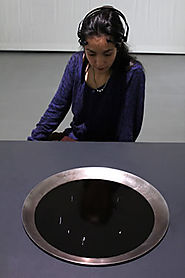
The Static Organ project is an on-going series of works generated through the use of biofeedback technologies (specifically EEG). These works focus on the potentials of biofeedback as a novel interface facilitating rich user experience and high levels of immersion. This form of interaction also offers new forms of creative expression that might not be explored through more traditional interfaces and interactions. This article will introduce the Static Organ project and its two major works (Mind Drops and Mind Pool) and highlight the need for new interfaces in music and art generation. With further expansion on the æsthetics of the works it will explain how, with a greater awareness of the user experience over usability, a system of interaction can provide an added richness that might otherwise be lost in the search for efficiency. Finally, the paper expands on the potential pleasure that can arise from such interactive systems. It is hoped that the paper will present the value of biofeedback in the arts.
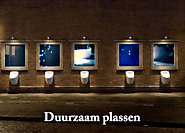
Mediamatic is a cultural institution dedicated to new developments in the arts since 1983. We organize lectures, workshops and art projects, focusing on nature, biotechnology and art+science in a strong international network. We organise lectures to further discover and learn how art, design and science merge and we look at how our senses, such as taste and smell, influence our emotions and associations.
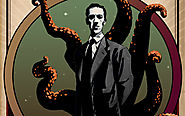
With a flood of dark memes and viral horror stories, the internet is mapping the contours of modern fear.
The word ‘creepypasta’ derives from ‘copypasta’, a generic term for any short piece of writing, image or video clip that is widely copy-and-pasted across forums and message boards. In its sinister variant, it flourishes on sites such as 4chan.org and Reddit, and specialised venues such as creepypasta.com and the Creepypasta Wiki (creepypasta.wikia.com), which at the time of writing has nearly 15,000 entries (these sites are all to be avoided at work). Creepypasta resembles rumour: generally it is repeated without acknowledgement of the original creator, and is cumulatively modified by many hands, existing in many versions. Even its creators might claim they heard it from someone else or found it on another site, obscuring their authorship to aid the suspension of disbelief. In the internet’s labyrinth of dead links, unattributed reproduction and misattribution lends itself well to horror: creepypasta has an eerie air of having arisen from nowhere.

When it comes to sound design, truth and reality may be different things. Matt Lau, from sound effects company Soundsnap, discusses how being true to the story often means straying from reality.

ISRE's Sourcebook for Research on Emotion and Affect. In this issue of Emotion Researcher, we consider the history of emotion and emotion research. This interdisciplinary collection of articles from renowned emotion scholars considers how understanding the past of emotion, and emotion research, can inform our present and future.